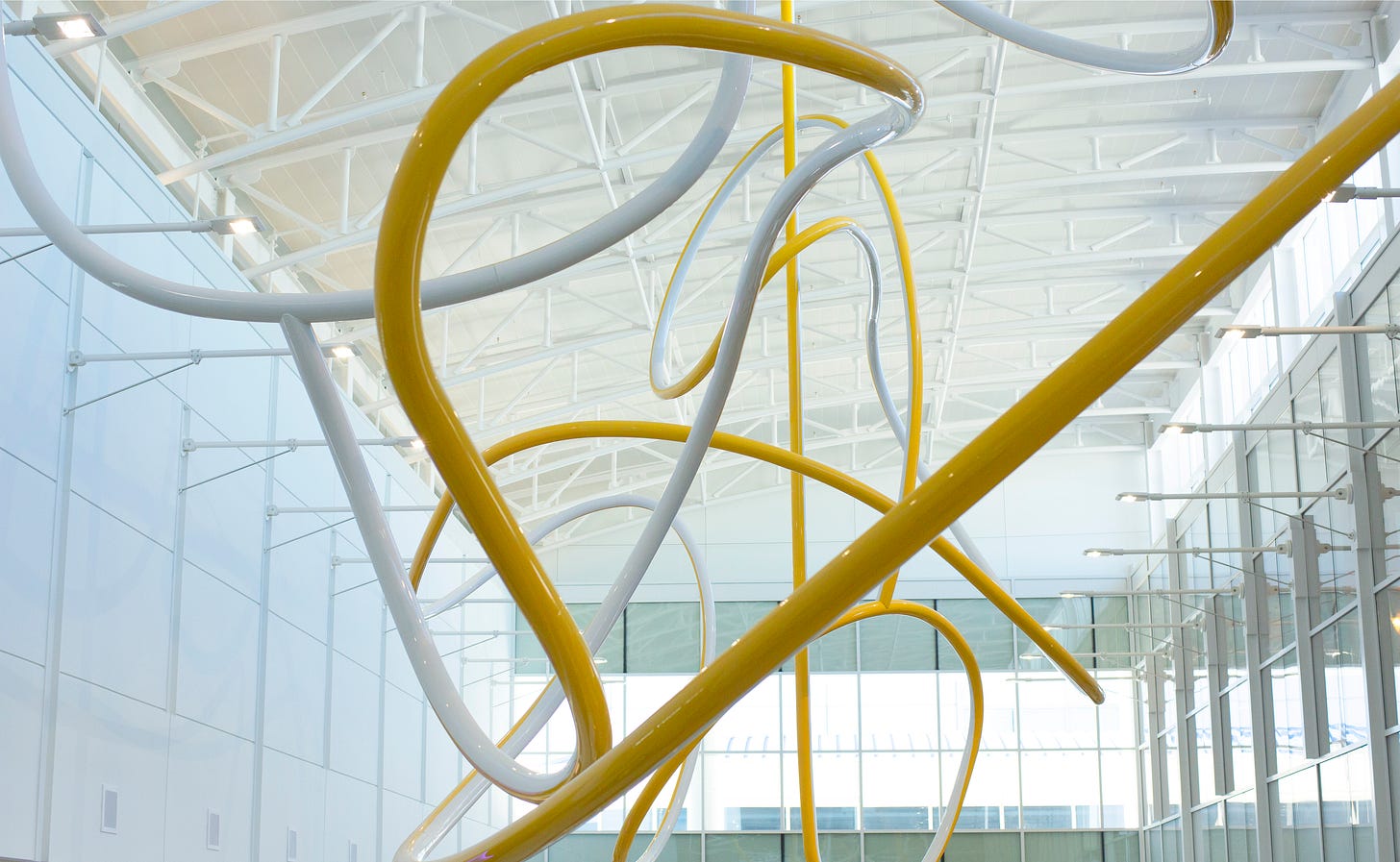Dear Friends,
Here I am sharing another excerpt from my new upcoming book “Open Encounters, Public Art - Sculpture, Relief, Installation” introduced by Jan Tumlir and published by Lars Müller Publishers. It has been printed and should be available in bookstores mid-September 2024.
All the best,
Christian
Following the success of Daisy ( 2008 ), Moeller has received numerous commissions from airports. In these transient spaces, where the rhythms of everyday life are so suddenly and thoroughly disrupted, this artist’s works function as serene, meditative koans. This is particularly true of Loops, which is his most abstract work to date, and hence also the most open to interpretation. Hung from the high ceiling of the food court in the East Terminal Expansion of the Charlotte Douglas International Airport, it consists of two mobiles that rotate very slowly in opposite directions. On first impression, it would seem that these represent nothing, that they are scribbles devoid of content. The majority of Moeller’s projects begin with a sketch and this one also ends there. Yet when a sketch is transposed from its flat surface into actual space as a three-dimensional object, it becomes a very different proposition, a world away from its improvised and spontaneous source. The discrepancy between the informal look of this piece and its laborious process of fabrication cannot be ignored. First, drawings on paper were scanned into the computer, given virtual volume in digital space, and 3D printed as diminutive models. Next, based on these models, sections of aluminum tubing, 5 inches in diameter, were bent with the aid of an ultra-high-pressure water system, and then intricately assembled on site. The resulting sculptures each extend to roughly 30 feet in all three dimensions and weigh more or less 1500 lbs.
In the end, Loops is both a work of and about abstraction, a representation of it, executed with great deliberation, every detail rendered just so. Moreover, this particular abstraction seems to be especially receptive to its context, its meandering composition recalling the flight paths and vapor trails of the planes circling overhead, awaiting permission to land. Finally, there is the all-important element of color to consider. Like so much of Moeller’s sculptural production, Loops is two-toned, its arabesque lines of tubing evenly divided all along their length into bands of white and yellow.
Here, one might be led to think of the racing stripes that often emblazon high-speed vehicles of all sorts. The artist provides us with another analogy: the stripe of colorful gel that was introduced to toothpaste during his youth as a bonus incentive to dental hygiene. Certainly, it is a less dynamic but perhaps more compelling way to consider this piece. Aren’t airplanes, too, fundamentally tubes into which we are packed at the takeoff terminal and from which we are extruded upon arrival? This work’s choreography of dancing lines benefits from the hurry-up-and-wait fugue state airports engender, inviting us to connect even the most disparate impressions and modes of thought.






